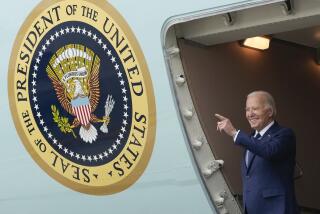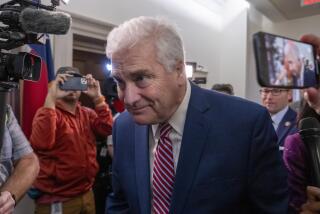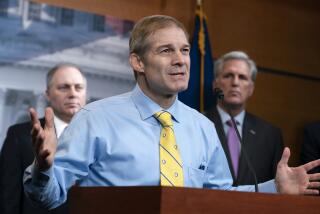Quirks, Goofs and Shady Deals: House Picked President Twice
- Share via
WASHINGTON — The House of Representatives has chosen a President only twice, in 1801 and 1825. Congress also was involved in the most controversial election in American history--1876--but the outcome actually was decided by a special commission appointed to review disputed electoral votes.
The election of 1800 wound up in the House because of a constitutional quirk and a goof.
The original Constitution--written in 1787 and ratified in 1790--did not provide for separate ballots for President and vice president. Both Thomas Jefferson and Aaron Burr, the presidential and vice presidential candidates of the Democratic-Republican Party, received 73 electoral votes. Because the party had neglected to withhold one vote from Burr, the election was thrown into the House.
The lame-duck Congress, with a partisan Federalist majority, flirted with electing the pliant Burr over Jefferson, who was considered a dangerous radical. But Federalist leader Alexander Hamilton, despite despising Jefferson, helped engineer his election on the 36th ballot for “the public good.”
In the 1824 election, Andrew Jackson failed to gain an electoral majority against John Quincy Adams, William H. Crawford and Henry Clay. In 1825, Adams was elected in the House with the help of its Speaker, Clay. Several House members won concessions from Adams on federal contracts in exchange for their support--and Clay became secretary of state in another rumored deal.
The election of 1876 was decided by a 15-member commission that awarded four sets of disputed electoral votes to Republican Rutherford B. Hayes instead of Democrat Samuel J. Tilden. The Democratic House rejected the commission’s decision, but the Republican Senate upheld it, and under the rules, the decision stood and Hayes became President.
More to Read
Get the L.A. Times Politics newsletter
Deeply reported insights into legislation, politics and policy from Sacramento, Washington and beyond. In your inbox twice per week.
You may occasionally receive promotional content from the Los Angeles Times.










